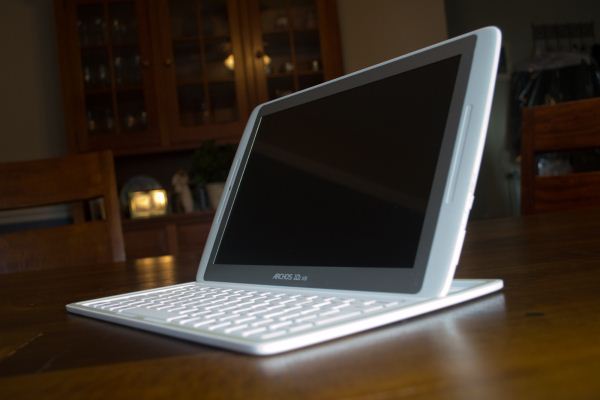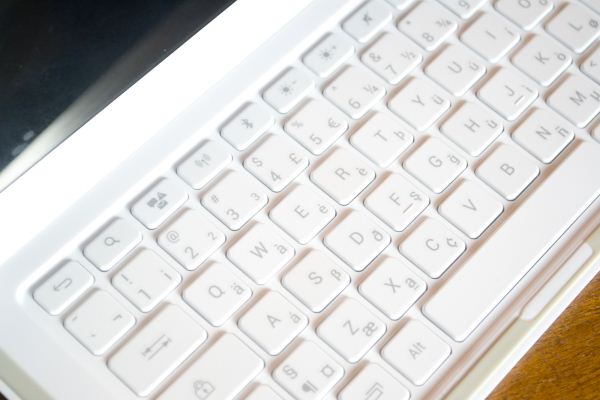The Archos 101 XS Review: Prettier, Faster, So Much Better
by Jason Inofuentes on August 22, 2012 12:15 PM ESTConclusion
The Archos G9 Turbos weren’t the easiest things to recommend. What made it somewhat easier were three factors: the software, the kickstand and the price. With the 101 G9 Turbo starting at just $329 MSRP, a stock and frequently updated Android build that provided more codec support than anything else we’d seen, and a kickstand to make that viewing ever easier, it was a no brainer for the video junkies. The new entrant, the Archos 101 XS, reaches a little further, at the expense of a few of its predecessors pluses. Gone is the optional HDD (making media storage effortless), and gone is the kickstand. The return on investment is vastly superior performance, and a much more stylish form factor. So, is the new contender worth it?
In a vacuum, the Archos 101 XS would be an easy recommendation over the last generation. Software support remains intact, and the loss of the HDD becomes less of an issue as more and more content is streamed, and the price of high capacity microSD cards continues to drop. Unfortunately for Archos, the tablet market is anything but a vacuum. Priced at $399, the 101 XS will top Archos’ new Gen10 XS tablet line, and faces stiff competition from similarly priced tablets like the ASUS TF300, Samsung Galaxy Tab 2 and even the Snapdragon S4-based Lenovo IdeaPad S2110. Raw performance might favor the 101 XS in a lot of these tests, but the sacrifices to battery life may be too much for some.
Archos has been in the tablet market longer than Apple’s been in the phone market. But in the consumer electronics space, first to market advantages can disappear in an instant. With performance that belies its last-gen SoC, the Archos 101 XS is a belting and attractive tablet. Easy to hold, slim, powerful and a perfect office or around the house companion. What it’s not is a road warrior. Battery life isn’t the whole competition, but its big enough that this contestant won’t win the all around. If you are a media junkie that wants a clean Android build and codec support to beat the band, and you’re not planning any long trips, the Archos 101 XS is a perfect fit. If longevity is a concern for you, then you’ll be better served looking elsewhere.
All hope’s not lost for Archos and their fans though. The path they’ve begun to blaze with the G9s and now the XS is moving in exactly the right direction. I’m confident the 11th generation of Archos tablets will move them ever further along in battery life, display and build quality. Indeed, the fate of the 101 XS isn’t so bad either; the Archos team will continue to churn out software updates and improve on what is already a great tablet.












44 Comments
View All Comments
rwei - Wednesday, August 22, 2012 - link
...wait, what? But iOS didn't exist yet, how could there be rumors of it being used on a tablet? Or do you just mean an Apple tablet in general?JasonInofuentes - Thursday, August 23, 2012 - link
Fair enough, though, most likely, iOS did exist; we just didn't know about it yet.wsjudd - Wednesday, August 22, 2012 - link
Pedantic mode on:The weights in the first table have varying units and spacing (or, for the first one, no units at all).
Weight 600 635g 580.6g 340 g
JasonInofuentes - Thursday, August 23, 2012 - link
Fixed. Thanks.Cheers.
Jason
vthl - Wednesday, August 22, 2012 - link
it feels a little biased and intentional sometimes ..... certain devices always left out of the charts for no reason...... earlier it was macbook pro retina from the samsung Samsung Series 7 notebook in display comparison now nexus 7 etc has been from few comparison lists (but not all).... if you people haven't tested those products in any of the benchmark you are comparing with .... care to put a note in the chart itself (not tested) .JasonInofuentes - Thursday, August 23, 2012 - link
So, a lot of this has to do with the fact that, though we have standard ways of running tests, we don't necessarily have a standard series of tests we perform on all devices. Some of that has to do with time or other resources, some of that has to do with value. Some tests are only pertinent if the value deviates in anyway from expectations. Take, for instance, Anand's recent analysis of IO performance in tablets. Previously, we wouldn't have though to check. As it became an issue, with SoC performance and software putting a higher load on IO, Anand took to analyzing the issue. Given the value focus of the Archos lines, I expect that IO performance won't be groundbreaking. And that might matter. So, I'll look into it, but that involves coordinating with Anand to ensure my testing methodology matches his.And yes, we don't test every device. I'm going to reveal a secret to you all. We're not a large team, all sitting together in a technology playroom, testing devices from sun up till . . . well, sun up. For only a few of us is this our full-time job, and for the rest, we do our best to ensure that the most interesting things make it to the site. And sometimes, we never get chance to find out.
Feel free to let us know when you want to take a closer look at a particular comparison and we'll try and put it together for you. Thanks for reading.
Jason
Wwhat - Wednesday, August 22, 2012 - link
Is it me or does this several page article omit to name its sensors? A small spec list with such things might be appropriate with reviews (even if they are advertisement ones)And while I'm posting: I also was surprised to see how light the nexus is compared to the other tablets, that makes a huge difference I think.
JasonInofuentes - Thursday, August 23, 2012 - link
Lightness is a big plus for one-handed operation of a tablet, and I think it's a component in the growing popularity of smaller tablets. A 1.3 lbs device is fine sitting on my couch, but if I'm standing in a subway car, or playing a game, my arm's can get a little weary. I'd much prefer a lighter device then.As to your other comments, we take all our reader comments into account (even if they are unnecessarily snarky), so I'll try to do better. In this case, the only thing omitted from the usual set of radios is the light sensor.
xaueious - Wednesday, August 22, 2012 - link
I wouldn't be so quick to give Archos any credit for optimizing the browser performance. TI OMAP4 always had an edge in the Sunspider benchmarks, and the performance here is inline with those results. It was TI that did any of the work, not Archos. To be precise, the TI OMAP4 reference was optimized targeting the Galaxy Nexus to begin with, so there's nothing to see here.The ASUS Transformer TF300 with Android 4.1.1 scores 1343.5 ms in the stock browser. Jellybean really changes the landscape of the browser benchmarks. I don't think ICS utilizes Tegra 3 fully.
JasonInofuentes - Thursday, August 23, 2012 - link
This is actually a story we've been trying to tell for sometime. While OEMs take the credit, silicon vendors are often doing the heavy lifting with software performance. As often as not, though, the optimizations that a TI or Qualcomm build into the Android versions shipped to OEMs are left out, in favor of aesthetically or function tweaked browsers, widgets and app drawers. So, while I agree TI merits a lot of the praise here, we like to encourage OEMs to follow Archos lead, so we'll give them some love, too. That said, Archos didn't just take a build and run it. The OEM sets the governor, and finalizes clock speeds, and also decides whether or not to use a particular silicon feature, and in which way. In this case, Archos made changes to the way that instructions are guided towards the low-power cores, GPU and CGPU; their goal being a boost to performance compared to a more conservative stock build.And then there's Jelly Bean. As always, we test as quickly and as much as possible. The TF300 just got its Jelly Bean build this week, and the delta between its JB Sunspider score and the ICS one is massive. So, who's to say that the Archos JB build won't also break new ground? In which case, the TF300 with 4.1.1 serves mainly to demonstrate what's to come. But doesn't negate the performance of the OMAP 4470.
Thanks for the comments. Keep them coming.
Jason